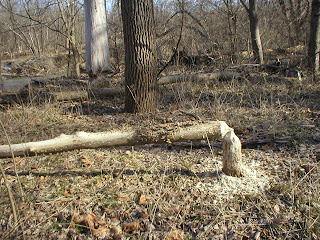If you spend much time in the woods and surrounding grass land areas; you will sooner or later encounter the remains of animals. This is normally in the form of scattered bones; left from the predators and scavengers. As most know, the deer population is very large; and as would therefore be expected, it is quite common to find deer bones and remains. Below are a few of the pictures I have collected over the last several years.
Because they are so common; I will begin with photos of White Tail Deer remains.
A nice buck's skull.....this was a nice find!
This is very typical of what you find...the bones scattered from scavengers.
And this one is unusual, in that it is mostly intact....a doe or buck after the antler shed
A nice little spike buck skull
Again............typical scattered remains.
What little is left of a cardinal after being eaten by a predator... a hawk? fox? owl?...
And even the predators fall prey to something...injury? age? sickness? This is a Redtail Hawk.
Another skeleton of sorts....a quite old Red Cedar. Note the nice condition of the wood inside from where I cut back the surface.
A shed snake skin; with my walking stick for length comparison (the walking stick is about waist high)...not sure the species of snake
The beginning of the life cycle...a Killdeer nest...these are interesting....usually just a few sticks in a rocky area.
Young Robert Pearson..age just 12 years old...who died back in 1837......I would love to know more of both his and his family's life in the early years of settlement in our area....This stone is in the Workheiser Cemetery on a bluff in the woods overlooking the Middlefork River valley.
Until next week....or whenever I get to another update..............
Because they are so common; I will begin with photos of White Tail Deer remains.
A nice buck's skull.....this was a nice find!
This is very typical of what you find...the bones scattered from scavengers.
And this one is unusual, in that it is mostly intact....a doe or buck after the antler shed
A nice little spike buck skull
Again............typical scattered remains.
This may be a bit graphic for some.....a doe carcass.This was in the winter and it was pretty well frozen, but you can see that scavengers were consuming it.
The remains of a hen pheasant...probably a meal for a predator...possibly coyote or hawk.
Raccoon skeleton...I may not have known for sure what it was if not for the tail still there.
What little is left of a cardinal after being eaten by a predator... a hawk? fox? owl?...
And even the predators fall prey to something...injury? age? sickness? This is a Redtail Hawk.
Another skeleton of sorts....a quite old Red Cedar. Note the nice condition of the wood inside from where I cut back the surface.
A shed snake skin; with my walking stick for length comparison (the walking stick is about waist high)...not sure the species of snake
The beginning of the life cycle...a Killdeer nest...these are interesting....usually just a few sticks in a rocky area.
Young Robert Pearson..age just 12 years old...who died back in 1837......I would love to know more of both his and his family's life in the early years of settlement in our area....This stone is in the Workheiser Cemetery on a bluff in the woods overlooking the Middlefork River valley.
Until next week....or whenever I get to another update..............

















































